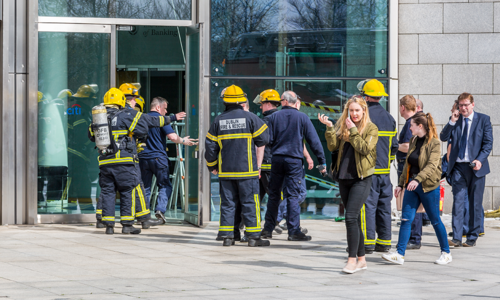 Thursday, October 3, 2024
Thursday, October 3, 2024  Thursday, October 3, 2024
Thursday, October 3, 2024 
An approved fire safety plan specifies the classification of the building and fire protection designs implemented to maximize the level of safety for the occupants. As well as providing the evacuation procedures for the occupants during a fire emergency, the fire safety plan also outlines the buildings fire and life safety systems, equipment maintenance requirements, known fire hazards, lists the key contacts, and contains the floor layout drawing and site plan. The plan clearly establishes evacuation solutions that are tailored to the specific requirements of the building usage. Without a doubt, fires within a building may expose occupants to dangerous situations, leading to the threat easily being compounded by fear or confusion that put them at further risk. It is therefore critical for building operators and property management to prepare in advance and rehearse fire evacuation procedures contained in the approved fire safety plans. The fire code does mandate that fire drills be conducted as prescribed, that the elected building supervisory personnel are fully trained, and that they understand their roles and responsibilities should an emergency evacuation arise. In the event a fire condition emerges, the buildings supervisory personnel provide occupant guidance during the evacuation, and in addition ensure evacuees reach the designated assembly area specified in the approved fire safety plan.
Whether in an industrial, residential or commercial occupancy, fire emergencies can occur without notice in a building at any time. In some cases, fires lead to distressing aftermaths. It is the responsibility of the business operators and/or the building owners to ensure that any potential fire hazards are identified, and to implement preventive measures to reduce, if not avert, the chance of fire occurring in the first place. This certainly can be a huge task; therefore, building managers depend heavily on up to date information being provided to them from not only their field personnel, but also from the tenants and their hired trades. This continuous flow of information may consist of recognizing immediate hazards in the building such as, blocked means of egress, and situations where fire and life safety equipment has impending issues. Conducting risk assessments is beneficial in identifying these fire hazards.
This article was contributed by Firepoint Inc, serving the GTA since 1997, developing fire department approved fire safety plans for newly constructed and existing buildings. See www.firepoint.ca or call 905-874-9400.